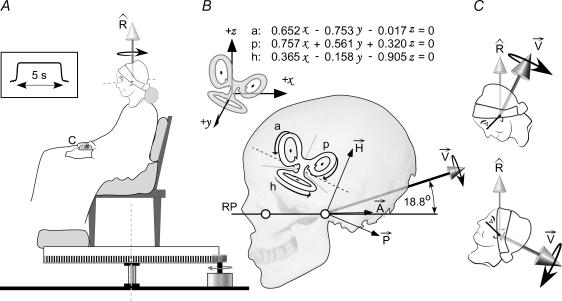Figure 1. The experiment and model.
A, subjects are rotated at constant velocity for 5 s about a vertical axis (vector Rˇ). At the end of that rotation they use the control (c) to drive themselves back to the starting point. B, planar equations describe the orientation in the skull of the anterior (a), posterior (p) and horizontal (h) semicircular canals in Cartesian coordinates (x, y, z) relative to Reid's plane (RP). The canals are polarized by the orientation of their receptor cells so that the galvanic stimulus will produce a specific rotation signal from each (vectors A⃗, P⃗, H⃗). The 6 canal vectors add to produce a resultant (V⃗) that is directed backwards and elevated 18.8 deg above RP. This direction of V⃗ applies for cathode-left, anode-right stimulation. Opposite polarity reverses the direction. C, when the head is tilted, Rˇ is fixed in terrestrial coordinates but V⃗ changes direction.

